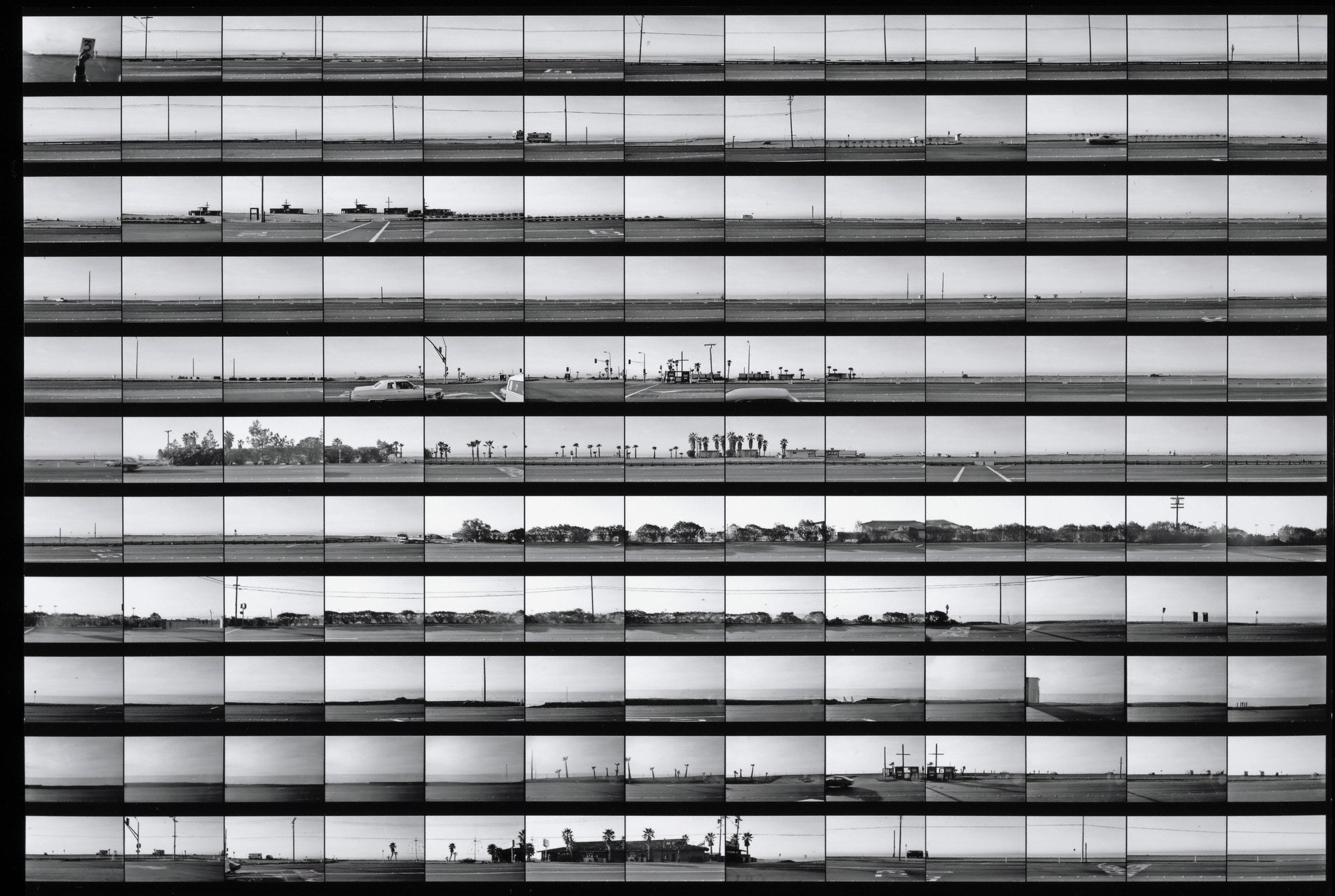
There is something soothing, even easy about vernacular architecture. It’s the territorial and spatial equivalent to Muzak. It evades and pre-dates the self-conscious identity of glitzy, cutting-edge architecture we are so familiar with today. There is an innocence to the vernacular. These are the buildings and environments of childhood.
This is apparent in the exhibition, In Focus: Ed Ruscha, currently showing at the J. Paul Getty Museum at the Getty Center in Los Angeles. What captivates about the shots is that they dare to curate buildings that are usually just part of the background. They become objects of curiosity, spectacles, even.

When framed in Ruscha’s black and white photographs the vernacular takes on more weight and it then becomes apparent how this defines Los Angeles more than any singular work of high architecture could. Los Angeles is its background.
Ed Ruscha wielded his camera in ways that dramatized this background Los Angeles: people are absent, night scenes, angular views, towering palm trees (not native to the city). They seem ironic counterpoints to Julius Shulman’s highly-conscious and scripted lens, for example. Julius Shulman frame space as unthreateningly cinematic, like stage sets. Ed Ruscha, in contrast, is more an innocent bystander, a witness to an endless crime scene of the informal, the ad hoc, played out along Los Angeles’ boulevards.

It’s architectural photography, but then again it’s not. It’s more like tourist Instamatic snapshots from the rolled down window of a car. The tourist may or may not get out of the car. Maybe there is no need. It’s the gaze of the obsessed observer. But it is also a loving gaze. Gentle, even. It reminds me of Moby’s blog. The way of the tourist. A light touch.
It’s as if the photographs are shouting, “Hey! This exists!” And we know it exists because it is everywhere and these buildings from the sixties are in many cases still part of the city. You can retrace his steps. This grounds the viewer in a deeper history and territorial memory.

Ruscha calls to mind a seedier, darker version of David Hockney’s Los Angeles. But this is partly the unintended consequence of the photographic medium. Despite this, Ruscha’s photographs manage to display a sense of playfulness with space and architecture that is strikingly similar to Hockney.
The vernacular defines the spatial experience of most of our lives. Cutting-edge architecture, for the most part, consists of those tiny points, bells, alarms, whistles, and flashing lights that dot, here and there, the landscape of this more expansive everyday.

Ruscha’s evidence reminds us that the shores of capital “A” architecture are often far away in physical terms—more in the space of text and the imagination for ordinary people. The endless parade of imagery that curates and documents the relatively rare instances of contemporary architecture speaks to the appalling dearth of such buildings in the true environments we must gracefully endure daily. What Ruscha’s photographs do is soften this blow by re-enchanting the normal, the mundane, the non-architectural.
There is a strange joy in identifying with the vernacular, the landscape of endless iterations of wood and plaster, gas-stations and themed apartment buildings. In Los Angeles the vernacular reflects the people who came and continue to come here. It’s a pastiche of this and that jumbled together and then eminently recognizable as something of Los Angeles, of “home”.


